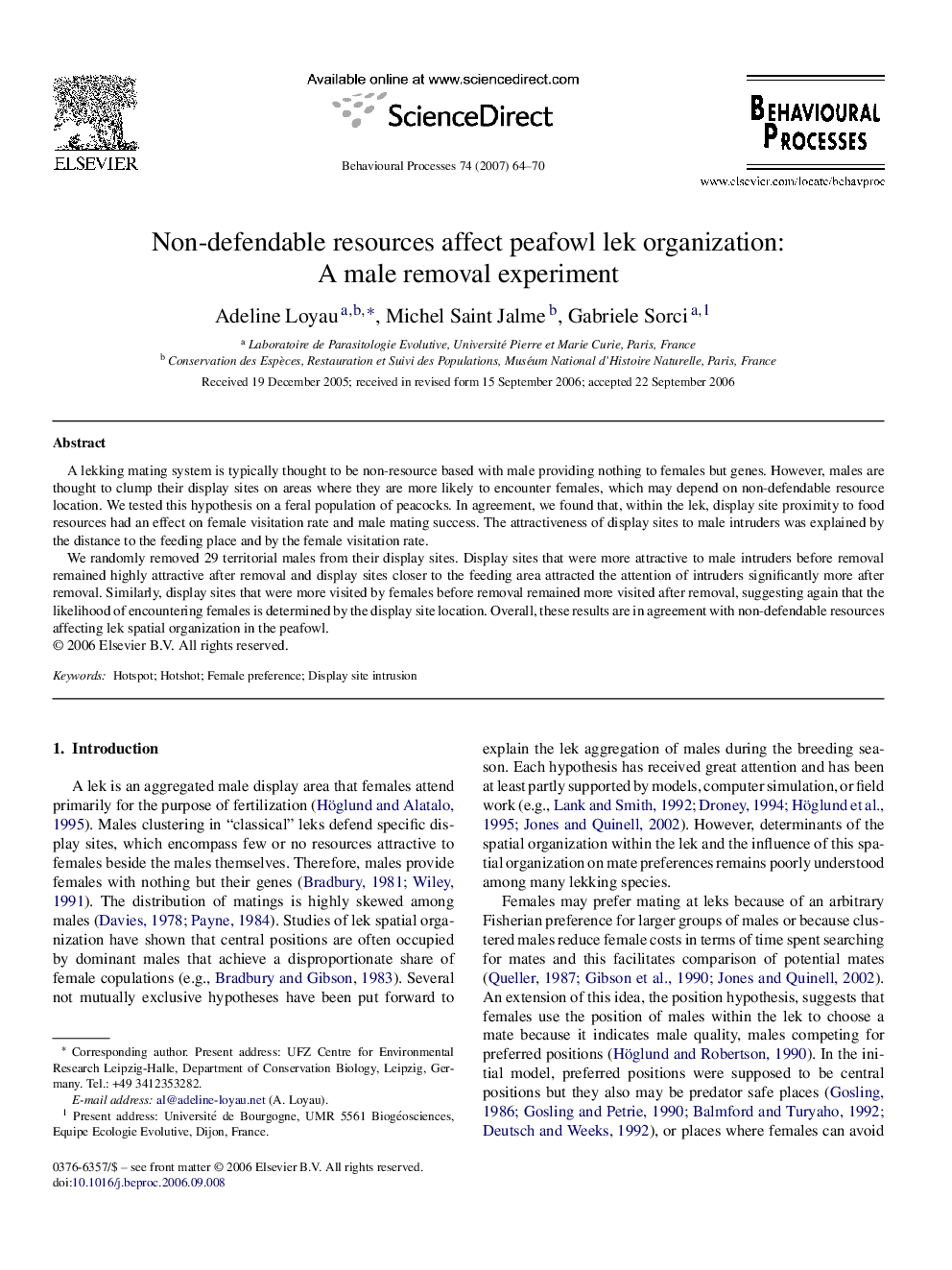| Article ID | Journal | Published Year | Pages | File Type |
|---|---|---|---|---|
| 2427657 | Behavioural Processes | 2007 | 7 Pages |
A lekking mating system is typically thought to be non-resource based with male providing nothing to females but genes. However, males are thought to clump their display sites on areas where they are more likely to encounter females, which may depend on non-defendable resource location. We tested this hypothesis on a feral population of peacocks. In agreement, we found that, within the lek, display site proximity to food resources had an effect on female visitation rate and male mating success. The attractiveness of display sites to male intruders was explained by the distance to the feeding place and by the female visitation rate.We randomly removed 29 territorial males from their display sites. Display sites that were more attractive to male intruders before removal remained highly attractive after removal and display sites closer to the feeding area attracted the attention of intruders significantly more after removal. Similarly, display sites that were more visited by females before removal remained more visited after removal, suggesting again that the likelihood of encountering females is determined by the display site location. Overall, these results are in agreement with non-defendable resources affecting lek spatial organization in the peafowl.
